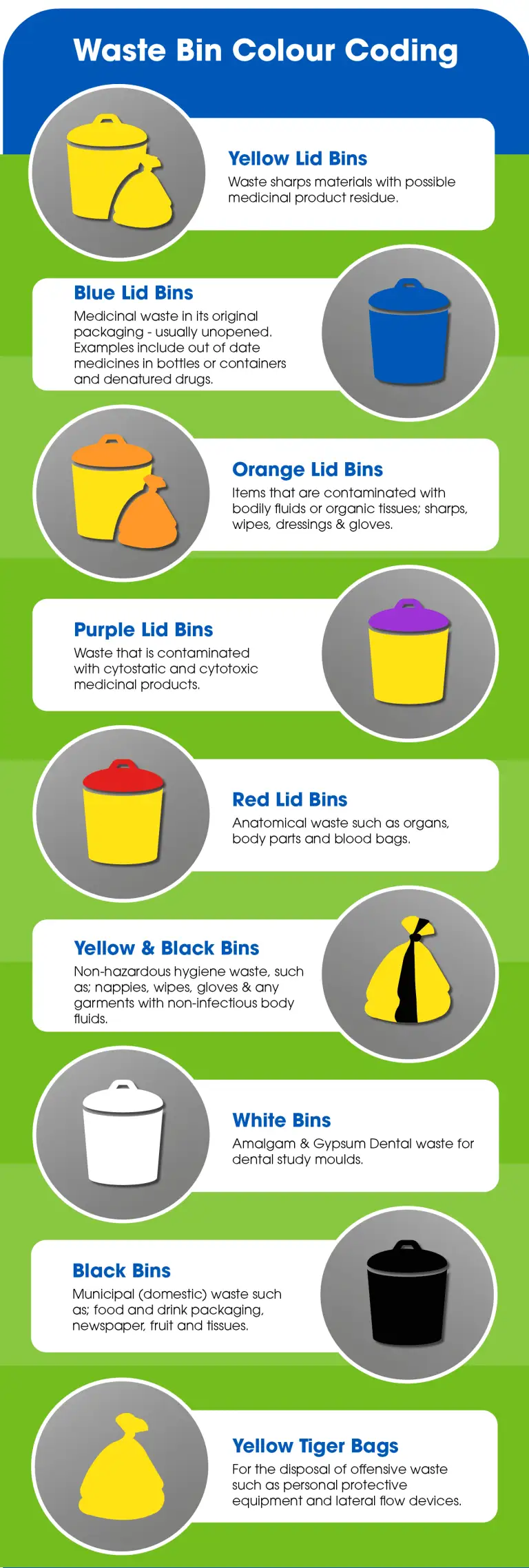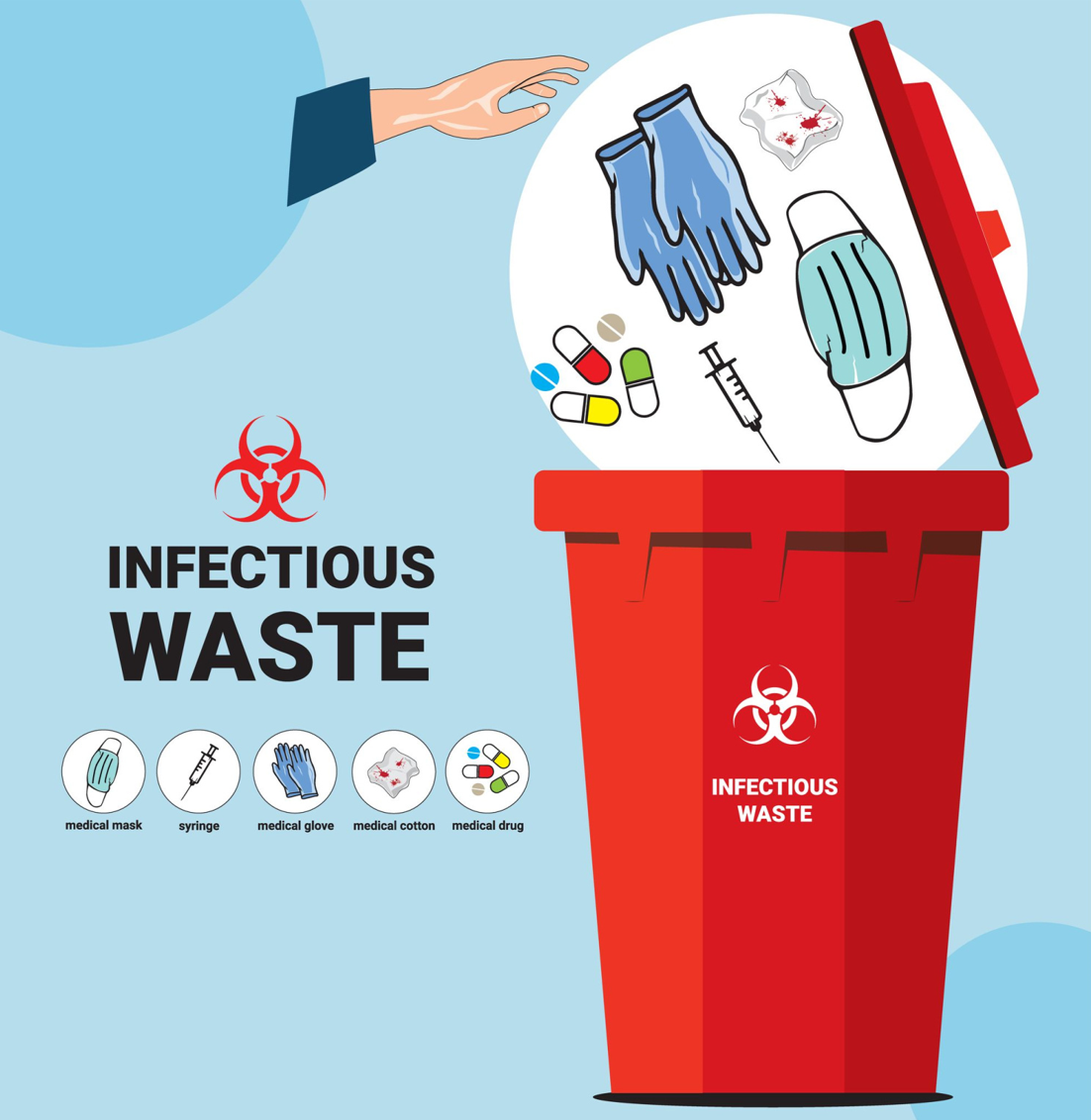Tailored Medical Waste Disposal Service: Fulfilling Healthcare Conformity Criteria
Compliance and Rules for Medical Garbage Disposal
Conformity and laws for clinical waste disposal play an essential function in making sure the safety and security and well-being of both healthcare professionals and the general public. Appropriate administration of medical waste is important to avoid the spread of infections, secure the setting, and keep public wellness. These laws incorporate numerous facets, consisting of the category and segregation of clinical waste, correct storage space and dealing with treatments, as well as transport and disposal techniques.
Importance of Compliance
The relevance of conformity with policies for clinical waste disposal can not be overstated. Appropriate disposal of medical waste is important for making sure the security and wellness of healthcare workers, patients, and the public. Clinical waste, which consists of products such as used needles, contaminated handwear covers, and biomedical waste, can present severe health and wellness risks otherwise taken care of and taken care of effectively.
Conformity with policies ensures that clinical waste is handled in a way that minimizes the possibility for exposure to infectious conditions and dangerous compounds - medical waste disposal. It helps protect against the spread of infections, such as HIV, hepatitis B and C, and various other bloodborne microorganisms. Conformity likewise plays a vital duty in safeguarding the environment by protecting against contamination of water sources, dirt, and air
Failure to follow policies can cause serious effects for health care centers, including penalties, legal action, and damages to their credibility. In addition, non-compliance may jeopardize the health and wellness of medical care workers, individuals, and the community.
Compliance with guidelines for medical waste disposal calls for adherence to specific guidelines and methods. These might include appropriate partition, packaging, labeling, and storage of clinical waste. It additionally involves utilizing authorized disposal approaches, such as landfilling, incineration, or autoclaving, depending on the sort of waste.
Regulative Agencies and Bodies
Regulative firms and bodies play a crucial function in managing conformity with laws for clinical garbage disposal. These organizations are responsible for setting guidelines, procedures, and requirements to make sure the risk-free and appropriate handling of medical waste. They impose and keep track of compliance to safeguard public health and the environment.
Among one of the most popular governing companies in the United States is the Epa (EPA) The EPA is responsible for managing the storage space, transport, treatment, and disposal of medical waste. They establish guidelines for waste generators, carriers, and treatment centers to comply with, guaranteeing that all required precautions are taken to avoid the spread of conditions and contamination.
Another essential regulatory body is the Occupational Safety And Security and Health And Wellness Management (OSHA) OSHA establishes guidelines and standards to protect employees from occupational risks, consisting of those pertaining to medical waste. WasteX Medical Waste Disposal. They supply guidelines for the secure handling and disposal of clinical waste to secure workers in health care centers
In addition to these federal firms, specific states additionally have their very own regulatory bodies that oversee medical waste disposal. These firms may have their very own details policies and needs that have to be adhered to.

Category and Segregation of Medical Waste
To make sure proper administration of clinical waste, it is vital to identify and segregate it according to established protocols and guidelines. medical waste removal service. Classification and segregation play a critical role in lessening the threat of infection, protecting the atmosphere, and making sure the safety and security of healthcare workers and the public
Clinical waste is identified right into different categories based upon its prospective threat degree. These categories consist of infectious waste, pathological waste, sharps waste, pharmaceutical waste, chemical waste, and radioactive waste. Each group needs particular handling, storage space, transport, and disposal methods to lessen the threat of direct exposure and contamination.
Partition of clinical waste entails dividing various kinds of waste at the resource. This process makes certain that waste with various risk degrees is not blended, minimizing the capacity for cross-contamination and making disposal procedures extra efficient. Proper segregation is achieved through using color-coded containers and labels, which assist medical care workers and waste management employees recognize and take care of each type of waste appropriately.
Along with category and partition, healthcare facilities have to additionally stick to neighborhood, state, and government regulations pertaining to medical waste administration. These guidelines lay out particular requirements for storage space, transportation, treatment, and last disposal of clinical waste, making sure conformity and preserving public wellness and safety and security.
Appropriate Storage and Handling Treatments
Proper storage space and dealing with procedures play a crucial duty in making certain the compliant and risk-free administration of clinical waste. Medical waste, which includes things such as utilized syringes, polluted gloves, and expired medicines, can position severe wellness and environmental dangers otherwise taken care of properly. It is critical for healthcare facilities and other generators of medical waste to execute rigorous storage and dealing with methods.
To begin with, medical waste should be kept in long lasting, watertight containers that are particularly developed for this function. These containers should be classified with the global biohazard icon and words "medical waste" to clearly suggest the components. Additionally, the containers should be kept firmly near to avoid any type of potential leakage or splilling.
Furthermore, it is necessary to set apart different kinds of clinical waste to stop cross-contamination. Sharps, such as needles and scalpels, should be stored in puncture-resistant containers to lessen the danger of injuries - WasteX Medical Waste Disposal. Chemical waste, such as solvents and disinfectants, need to be stored independently from various other sorts of clinical waste to avoid hazardous direct exposures or chemical reactions

Transport and Disposal Techniques
Healthcare facilities have to make sure the risk-free transportation and proper disposal of their clinical waste to abide by policies and protect public wellness. Transport and disposal methods play an essential role in protecting against the spread of transmittable illness and minimizing the ecological effect of medical waste.
To deliver medical waste, healthcare centers should make use of puncture-resistant and watertight containers that are identified with the biohazard symbol. These containers need to be safely secured to avoid any leak during transport. Additionally, medical care facilities must establish methods for the transportation procedure, consisting of the use of experienced workers and devoted automobiles.
Once the clinical waste reaches the disposal center, it undergoes different techniques of treatment - WasteX Medical Waste Disposal. One usual method is incineration, which entails shedding the waste at high temperatures to ruin microorganisms and decrease the quantity of waste.
It is vital for medical care centers to deal with qualified and permitted waste administration business to ensure correct transportation and disposal of clinical waste. These business have the know-how and sources to deal with clinical waste securely and in compliance with laws.
Final Thought
To conclude, conformity with policies for clinical garbage disposal is of utmost value to make certain public health and wellness and safety. Governing agencies and bodies play a vital function in imposing these regulations. Appropriate classification and segregation of medical waste, in addition to complying with suitable storage space and handling procedures, are important to prevent contamination and the spread of diseases. Sufficient transportation and disposal methods should be carried out to decrease environmental impacts. On the whole, adherence to compliance and guidelines is essential to efficiently handle clinical waste.
Clinical waste, which includes things such as utilized needles, infected handwear covers, and biomedical waste, can pose significant health and wellness dangers if not dealt with and disposed of appropriately.
These categories consist of infectious waste, pathological waste, sharps waste, pharmaceutical waste, chemical waste, and contaminated waste.Segregation of clinical waste entails separating various kinds of waste at the source. Correct segregation is attained through the usage of color-coded labels this link and containers, which help health care employees and waste administration personnel determine and handle each type of waste correctly.
Chemical waste, such as solvents and anti-bacterials, need to be saved individually from various other types of clinical waste to prevent harmful exposures or chemical reactions.